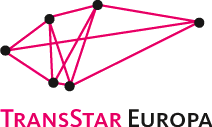In Łódź (05 – 07 April 2013) the working groups German-Slovenian (workshop leadership: Amalija Maček), German-Czech (workshop leadership: Radovan Charvát) and German-Polish (workshop leadership: Sława Lisiecka).
Excerpt from the workshop report by Amalija Maček (German-Slovenian)
After a round of introductions, all three groups worked on a translation of the first two paragraphs of Günther Grass’ Blechtrommel [Tin Drum] into the respective language. What at first seemed to be not too much text turned out to be a true challenge. In very little time the participants developed very good suggestions. We discussed archaic words, double meanings (spregledati in German can take on the meaning of durchschauen [see through] or übersehen [overlook/ignore]) and the picture of the one eye. A longer discussion was ignited by the word Knotengebilde [chiastic structure] whereby there were many different suggestions (vozlovje, tvorba, skulptura, kompozicija). We decided on the word tvorba since it has something organic which can be associated to cartilage and other medical expressions. It was especially joyous that the participants noticed deviations from the formal language and rhythmic elements of the original.
In the German-Slovenian workshop participants continued to work on the translation of the text Saltwater by Almut Sandig. Participants really enjoyed the text and also prepared very good translations at home. In the course of the work we discovered many entanglements, repetitions and symbols whereupon one could feel the delight in translating. With time we actually continued to like the text even better. There were a few difficult passages where we were not quite happy with the results.
Our work was very productive, we worked through the text sentence for sentence and discussed cars, hair, negative insinuations, estrangement in the family, the ancestry of the father and so on, but also general translational issues such as how far one can go when translating colloquialisms, how to translate dialogues that are not set in quotation marks, how one can make language more alive and how one can insert repetitions or alliterations at the right spot and avoid them at other spots.
Here are some photos.


